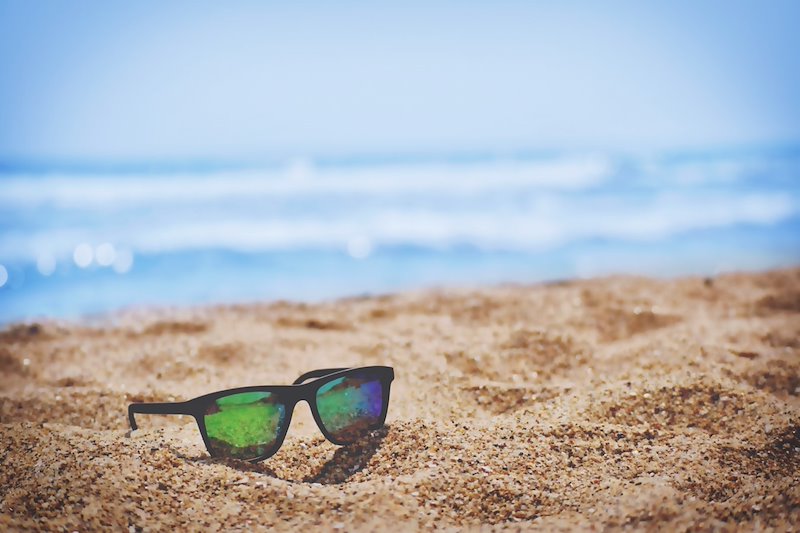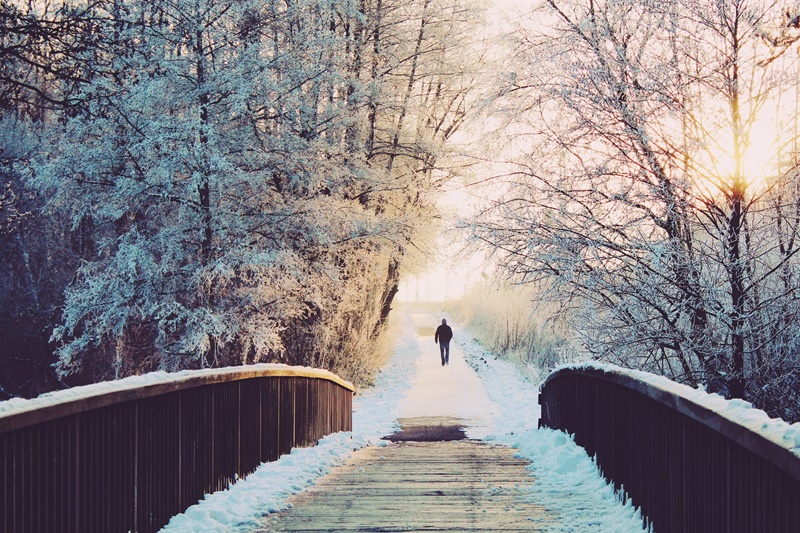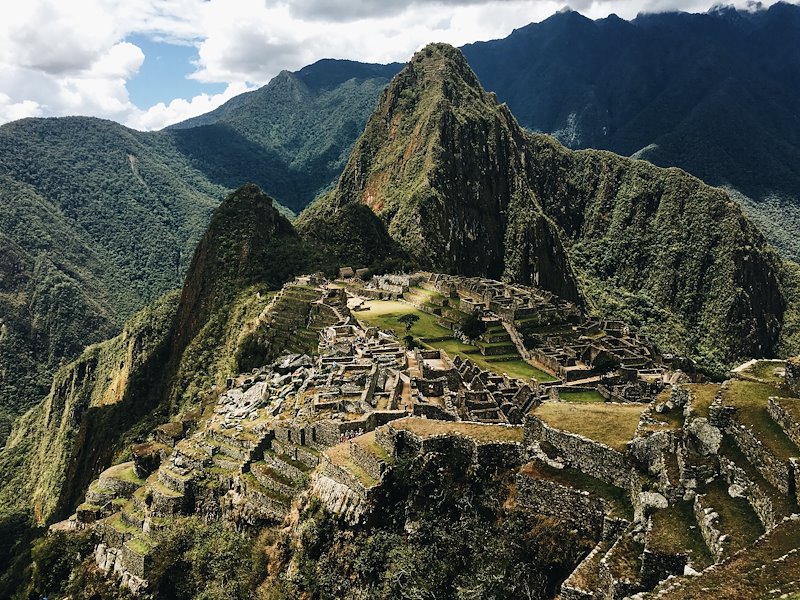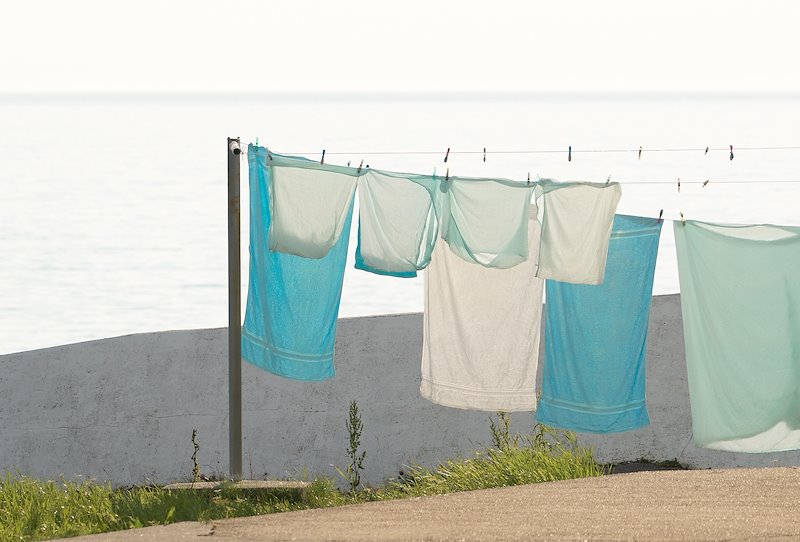Ultimate Guide to Packing for Carry-On Only Travel
🌡 Climate
Climate affects your packing list more than any other factor.
Packing the right clothes and accessories for the climate or situation means you’ll be comfortable during your entire trip.
Clothes also change the feasibility of certain activities.
Not having a jacket in the winter can mean a cold walk a night would be difficult to tolerate. Not having a bathing suit, well in some circumstances, means you can’t enjoy a nice dip in an ocean or pool.
🔥 Hot Weather

Hot weather means lighter and smaller clothes.
Your only limitation is how skimpy the clothing can be. Some cultures look down upon v-necks or spaghetti strap tank tops.
Hot weather usually involves swimming or water activities. Don’t forget your bathing suit or flipflops.
Consider bringing a water bottle along if the weather is going to be super hot. Travel means walking around. If you are sweating a lot, you’ll need water.
❄Cold Weather

Cold weather trips require a wide variety of medium to heavy clothing.
Layering is key.
A "shell" or wind resistant outer layer and a thermal inner layer (against your skin) are the basics you can build a comfortable cold weather wardrobe around. Changing up how many layers you are wearing in between a thermal layer and a shell is a smart way to address changing temperatures or conditions. Some days may require a t-shirt, but others may need some sweater in between layers to feel comfortable.
Temperate Weather
Temperate weather requires a little bit of everything, tailored to your environment.
Only packing a carry-on becomes challenging when the days are warm and the nights are cold.
I don't like temperate travel because I always end up wearing a hoodie in the morning when it's cold. As the day gets warmer wearing a hoodie becomes too hot. After you take it off, you'll have to carry it around all afternoon.
📅 Length of Trip
The longer you travel, the more variety of outfits and clothes you’ll need. Typically you'll have more plans the longer you stay, and the range of activities will increase.
You’ll have to need clothes for an outdoor adventure and a formal dinner. One of our packing lists has a full suit in it and flip-flops.
Technically, you could travel indefinitely with two pairs of underwear and two days worth of suitable outerwear.
If you can keep your clothes clean, you don’t need much and could skip formal or adventure gear.
How grimy you are willing to get will affect your packing as well. I can’t wear a t-shirt twice without feeling greasy.
Other people can wear the same shirt for days and feel fresh and comfortable.
Purpose
👔 Business
Business trips could require suits or more formal attire.
Business attire has become a lot more casual over time, but it’s a good idea to research the business customs of your host country.
A simple button-down shirt and jeans will work in America but may seem insulting in a more formal society like Japan.
Grooming will also be more critical on business trips.
No client or business contact will be impressed that your packing list is so sparse and light you couldn’t fit a comb, and that is why your hair is messy.
- There is no way to pack a suit without wrinkling it. Wear your suit on the plane if you'll need it in your destination.
- Don't wear business shoes on a flight. They'll scuff on the seat in front of you or somebody will run them over with a roller bag.
🏔 Adventure

Adventure travel means everything you wear will go through extra wear and tear. Adventure clothes mean you require extra durability.
Pants that survive a subway trip do not survive a hike to Machu Pico.
Those new chinos aren’t going to survive a hike through the Serengeti.
Socks are more important than you think. Get quality socks if you are going to be hiking.
Special Note on Known vs. Unknown Places
You can split the planet between known places and unknown places.
Known places are the places where tourism is frequent and expected.
Unknown places are off the beaten path. Rural towns in Poland or Africa are good examples of unknown places. In unknown places, tourists can be less of a welcome visitor and more of a curiosity or nuisance.
In a known place, you can pick up almost anything you forget or spontaneously need.
Known places will have chargers, aspirin, or socks, usually within walking distance.
Unknown places will have grocery or convenience stores around, but you never know how far away the stores are.
Clothing
The right clothes can make or break a trip. The most items in your carry on will be clothes.
Fabrics
Picking the right fabrics for your clothing is extremely important.
You could get super detailed with fabric research, but the best travel fabrics are either:
- Merino Wool
-or-
- Synthetic Blends
🐑 Merino
Merino wool is a newer type of wool which breathes and dries and looks like natural wool but is much lighter and more refreshing. If you can afford 100% Merino wool clothes, then purchasing them would be worth it.
I only wear my Merino clothing when I travel. This way the clothes should last much longer. My Merino clothes should last a lifetime.
Common Fiber Comparison
Cotton
- Comfortable, durable, and cheap.
- Holds water, not breathable.
- Wrinkles easily. Can be chemically treated or blended with synthetics to reduce wrinkling.
Linen
- Cool, soft, and comfortable.
- Wrinkles can get stiff.
Wool
- Comfortable stretchy, moisture absorbent.
- Insulates extremely well against cold and heat, even when damp. Does not wrinkle easily.
- Some blends are hard to dry, shrinks easily if incorrectly washed.
- Naturally, wrinkle resistant.
Silk
- Smooth and comfortable, hard to wrinkle.
- Expensive, difficult to clean.
Hair fibers (cashmere)
- Breathable, yet insulating. Great for cold weather.
- Generally very expensive.
- Harder to wrinkle.
Synthetics
Examples: Rayon, Nylon, Polyester. Breathable, dries quickly, great for hot weather.
- Can cling, casual appearance.
- Resists wrinkling.
Underwear
The number of pairs of underwear is very variable.
Some people don’t wear underwear, and other people will wear two pairs a day.
How much you sweat and who you are with tends to drive a lot of undergarment decisions.
Every pair of underwear will fit each person differently. A good test for underwear is to soak the underwear in water, then walk a mile. Do they chafe, shrink, how do they fit?
If you have the money, invest in expensive merino travel underwear and only wear underwear when traveling. A $40 pair of quality undergarments will probably last the rest of your life depending on how often you wear them.
Modularity
Every piece of outer clothing should match each other.
Don’t bring camouflage long sleeve shirts and neon pink pants that don’t match each other.
Build your outfits around blacks/greys or beige color schemes.
Layering
Layer for colder weather.
Don’t pack five sweaters. Pack five different sizes, types, and fabrics of clothing so you can layer well.
Bring a separate sweater, hoodie, long sleeve, heavy long sleeve, and t-shirt and mix and match your outfit depending on the weather. Variety is key.
Your goal is to be able to take clothes on and off during the day as the temperature changes and also be able to pack.
The best winter jackets are snowboard/ski jacket shells. Small, lightweight, waterproof, built in thermal vents you can open and close, and designed for layering.
Shoes
Shoes are essential. Do not buy cheap shoes.
Travel is full of walking around, then standing in a line, then walking around again.
The weight of your single carry-on will be on your back a lot of time.
Supportive and comfortable shoes help make all the time on your feet more comfortable.
Don’t buy brand new shoes and wear them in on the trip. Bring shoes that you’ve worn in a little so you can be sure they work well.
- Put your shoes in extra shower caps. You can get plenty of free shower caps from hotels.
💂 Ranger Roll
The ranger roll is a great way to conserve space.
Be careful, just because you can make ten shirts take up the space of six, doesn't mean you should pack ten shirts.
Ranger rolled items are dense and therefore heavy for their size.
Old Clothes
Bring some old clothes that you can discard along the way to make room for souvenirs or other items.
I usually keep worn t-shirts or other clothes that don’t fit right, so I always have something disposable to bring along.
Wear older clothes on more adventurous days so if a piece of clothing rips or tear along the way you won’t mind throwing it out.
Technology
Chargers
Bring two cables for every type of device you have. Two lightning, USB-C, or whatever else you have. You’ll lose one along the way. Not having a charged device with maps could make or break a trip or day.
Research which destination you’re going to and bring the appropriate adapter. One is probably fine.
Laptops
Don’t bring a good laptop unless you need it for work. Even in a dedicated laptop compartment, your laptop will get bounced around a lot.
If all you need to do is answer a few emails here and there, buy a cheap laptop to travel with. You can usually find cheap refurbished last generation laptops on woot.com. I spend around $200 on a cheap laptop just for travel and backups.
If you are going to a high theft area, make your laptop look less valuable. Scuff up or put duct tape on your laptop to make it look old and damaged. Old and broken electronics are harder to sell and more unappealing to thieves.
Toiletries
Soaps
Soaps are a personal preference. I’ll use anything, but I know a lot of people who can’t use anything but their favorite brand.
First Aid
If you are traveling to a known place and aren’t going on any adventures, then leave the band-aids behind.
You’ll make it.
Bring a couple of aspirin or pain reliever of choice for plane trips. Having a headache on a 15-hour flight is pure agony.
Tell your doctor where you are going and follow their instructions no matter you read about on the internet.
Bring just enough comfort medications you may need try not to bring a whole pharmacy. A couple of doses antacids for heartburn is enough. You can pick up most over the counter items along the way.
If you are an American, you may be surprised that in other countries medications are more commonly sold in pharmacies instead of convenience stores like 7-11.
Towels

You need a towel while staying in a hostel without shared towels or if you are camping. Otherwise, you probably won’t need a towel at all.
Hotels or AirBnbs will have towels for use.
If you are staying near a beach, your accommodations may also provide beach towels.
In a humid climate, even a quick-drying microfiber towel won’t completely dry out. If you bring a towel, you can’t get to dry you’ll have to carry a stinky and moldy towel in your luggage the entire trip.
Reasonably priced travel towels are also bulky and heavy and take up space for a t-shirt or a few pairs or underwear.
If you have the money and need to bring a towel, splurge on an expensive hiking towel. Long distance hikers have ultra lightweight and practical gear.
Buy a cheap towel on after you arrive at your destination and hanging it outside your carry-on is also an option.
Laundry
There is a theoretical limit to how many days you can travel without doing laundry.
Even the most unhygienic person will eventually reach a limit on how dirty they are willing to be.
You’ll have three primary options for cleaning your clothing.
- Laundromat
- Laundry Service
- DIY Laundry
Laundromats have powered machines that will wash your clothes thoroughly. You’ll be tethered to the laundromat while your laundry is going through the wash cycle or drying. You won’t be able to wander too far away or risk your clothes getting stolen.
Most laundromats are coin or card operated. Research ahead of time if you’ll need cash or a credit card to avoid wasting time trying to pay.
In Chaing Mai, I had a hard time getting enough change to use a laundromat. I ran into a lot of language barriers trying to communicate giving somebody money and getting the same amount of money back in return was difficult.
Minimizing the amount of downtime to laundry is essential.
Miscellaneous Items
Random Ideas
Bring one small and two large quart size plastic freezer bags. Freezer bags are durable, take up almost no room and are handy items. Get freezer bags if you can as they are much thicker and harder to break.
- Storing wet socks
- Protecting electronics at the beach or the slopes
- Organizing items if a pocket/bag breaks
- Holding important papers
- Carrying loose mementos like rocks or small items
Carry-On Selection
What makes a good carry-on?
Depends on what kind of person you are and what type of travel you enjoy the most.
Do you like compartments or packing cubes?
Do you need a lot of straps to make luggage sit right on your back?
Do you need heavy, durable fabrics or do cheaper bags work?
I like a carry-on with compartments, as little straps as possible, and a medium fabric to keep the weight down. I love fewer pockets because I can never remember which pocket holds which items.
- 🌡 Climate
- 🔥 Hot Weather
- ❄Cold Weather
- Temperate Weather
- 📅 Length of Trip
- Purpose
- 👔 Business
- 🏔 Adventure
- Special Note on Known vs. Unknown Places
- Clothing
- Fabrics
- 🐑 Merino
- Common Fiber Comparison
- Underwear
- Modularity
- Layering
- Shoes
- 💂 Ranger Roll
- Old Clothes
- Technology
- Chargers
- Laptops
- Toiletries
- Soaps
- First Aid
- Towels
- Laundry
- Miscellaneous Items
- Random Ideas
- Carry-On Selection